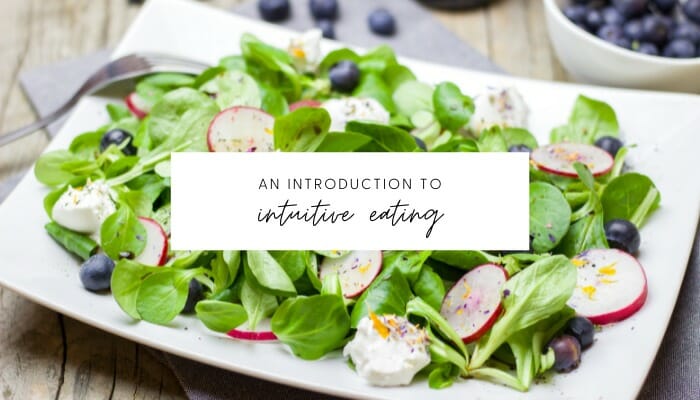An Intro to Intuitive Eating

How many times have you started a diet only to feel miserable, eventually give up, and then feel guilty for it? Diets are usually associated with end goals, such as weight loss or muscle building, but they aren’t sustainable in the long run, unfortunately.
An alternative to dieting is something much more natural, practical, and doable. The practice of intuitive eating is a much better way to view your relationship with food and do so in a way that feels good. Rather than restricting food, counting calories, and following any diet “rules,” intuitive eating allows you to listen to your body and eat whatever makes you feel your absolute best. If you listen, your body will tell you precisely what you need to thrive — it just takes some practice learning how to tune in and listen for the cues. Here are four ways that you can start eating intuitively.
Don’t ignore your hunger cues.
Too many diets focus on ignoring your hunger and training yourself to eat smaller portions. Hunger is our body’s signal that it needs more nourishment and energy, and I believe we should pay attention to those cues. Practice honoring your hunger cues by feeding yourself nourishing foods, and work on distinguishing hunger from other emotions, such as boredom or sadness. When we ignore our hunger cues, we are left feeling exhausted, irritable, and having a negative relationship with food. It takes some practice but listening to what your body needs will help you give it exactly that — what it needs!
Forget the idea that there are “good” foods and “bad” foods.
All foods have different nutritional values, and some have more nutrients than others. However, the idea of good and bad foods only re-enforces restriction, feelings of guilt, and a negative relationship with food. All foods are good for something, whether they’re full of micronutrients, give you a boost of energy, or make you happy. Start asking whether your foods are nutrient-dense instead of “bad” or “good.” If you prioritize eating nutrient-dense foods and still enjoy the other foods you love, you’ll figure out the perfect balanced approach that’ll work for your unique body.
Identify your cravings.
Have you ever been on a diet that eliminates all sugar, carbohydrates, sodium, or anything else? It feels like there’s nothing you want more than to eat those foods that are off-limits. If you wish to eat something, allow yourself to satisfy that craving. If you’re craving something sweet, have a bowl of fruits or some dark chocolate. If you still have that craving afterward, identify why exactly you feel that way. Maybe your cravings originate from feeling stressed or upset, being dehydrated, or feeling tired. Our cravings are telling us something, and it’s usually relatively easy to tap in and figure out where they’re coming from when they pop up.
View your food as nourishment, not punishment.
You eat to fuel your body with all the nutrients it needs to thrive. You eat to give yourself the energy to study, work, play, and feel your best. Food is your fuel, and it is in no way a punishment. We don’t need to earn our meals, and when we shift this way of thinking, everything else falls into place.
It takes some work, but once you start working toward this positive relationship with food, you’ll see dramatic changes to your overall wellbeing, both physically and mentally.
Need more support? Let’s chat. If what you’ve been doing hasn’t been getting you to your goals – it’s time to create change. Grab a Free 20-minute call and let’s see what we can create for you! BOOK NOW
